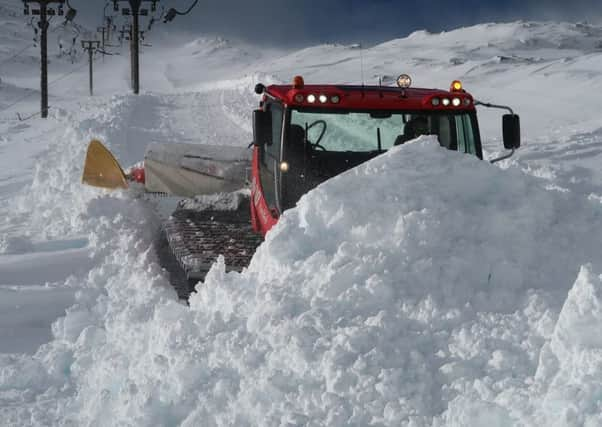Scotland’s ski resorts gear up for a strong end to the season


Meanwhile, over in the Alps, the first half of January saw monumental amounts of snow, particularly in Austria, where in some areas more than 300cm fell in the space of just two weeks. In the Salzburg region alone, some 41,000 people were cut off from the outside world as roads became impassable. According to a spokesman for the country’s Central Institute for Meteorolgy and Geodynamics, it was the kind of snow event that only comes along once every decade.
Alas, back in Scotland, the season’s been a bit of a non-starter so far, almost as if our share of white gold was confiscated, multiplied by ten and divided up between everybody else. For most of the month of February, as temperatures soared to giddy heights across the Highlands, there was more chance of getting invited round to the neighbours for a barbecue than getting any skiing or snowboarding done.
Advertisement
Hide AdAdvertisement
Hide AdThe “skier day” statistics for the first three months of the season, when they eventually drop later in the year, will no doubt make for grim reading, perhaps even grimmer reading than the “worst ever” season of 2016/17. But let’s not dwell on that too much right now, because at time of writing things are looking up – way up. In the west, Glencoe and Nevis Range have had lifts open through the week following the recent spell of wintry weather, and things are sounding promising at CairnGorm, Glenshee and the Lecht too, as the new snow that fell last weekend gets topped up by further showers. According to the latest report from CairnGorm, “runs above mid mountain are now loaded and in great shape,” while at Glenshee “a combination of wind and snow is making for some really fun off piste and the fresh snow is filling in runs nicely.” So, forget everything you’ve heard about the Scottish winter thus far (including what you may have read about 30 seconds ago in this column.) As of now, it’s time to put the barbecue back in the garage, dig out all your snow-sliding gear and make sure you are in a state of readiness to take advantage of what could still be a great Scottish ski season, albeit a slightly shorter one than we’ve come to expect.
It’s at times like these, with good snow conditions in the pipeline and only very limited options for taking advantage of them due to work commitments, when I wonder if we couldn’t learn a thing or two from the Canadians. In certain hardcore ski towns, it’s perfectly acceptable to call a “snow day” when conditions get good – after a big dump of snow, many shops, cafes and other small businesses simply close down for the day as everybody hits the hill.
At the risk of pelters from the business community, what would happen in Scotland if – say – employees in non-essential services anywhere within a 50 mile radius of the five main ski centres were entitled to take a couple of snow days each winter? They’d have to give their employers 48 hours’ notice and perhaps make up the time they’d missed later in the year, once the snow had all gone.
OK, it would probably be chaos, at least to begin with, but it would mean more revenue for the ski resorts, and it would also be a decent incentive for skiers to move to the area – not to mention an incentive for non-skiers to take up skiing. Over time, might the economic advantages start to outweigh the disadvantages? Plus, if it allowed more people to enjoy those rare bluebird days that always seem to come along in the middle of the week, wouldn’t that make a chunk of the population that bit happier and healthier? And wouldn’t that be good news for everyone?